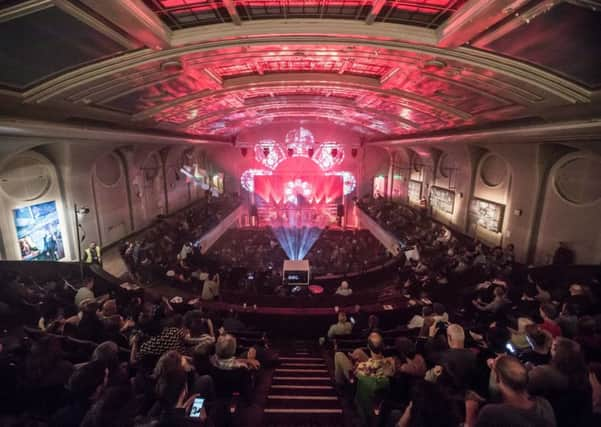Festival review: Hidden Door 2019


Festival review: Hidden Door 2019
Hidden Door: Music, Leith Theatre ****
Since it first helped clear out the dilapidated shell of Leith Theatre in 2017 and began a restoration which quickly saw the grand old hall recognised last summer as an Edinburgh International Festival venue, Hidden Door’s fate has seemed intertwined with that of the theatre – this year is the third in a row where it has made Leith Theatre its base.
Perhaps that is more by necessity than design this time; towards the end of last year Hidden Door had to instigate a fundraising drive to survive and this year’s festival has been contracted from a week and a half to four days and nights.
Advertisement
Hide AdAdvertisement
Hide AdOn Thursday’s opening evening a line-up of female artists was curated by The List magazine, with fierce East Lothian rap outfit the Honey Farm and the upmarket electronica of Chuchoter setting the scene for BBC Sound of 2017 winner Ray BLK, whose classy and energetic soul-pop forced an inevitable comparison with Emeli Sande when she covered – with impressive vocal style and confidence – the latter’s Heaven.
Friday night’s bill was heavy on club production and, despite the replacement of the billed Nathan Fake, George Fitzgerald’s set of house-informed club atmospherics offered the perfect crescendo for his headline appearance, with the presence of an analogue drummer in his live trio bringing a sense of urgency to signature tracks such as Burns and Full Circle.
Saturday’s big draw was the Spanish-English troupe of electronic rockers Crystal Fighters, whose sound and show blended the energy of a rave with the visceral unpredictability of a rock set, before a late night club show. For Hidden Door this was something of a placeholder event, but clever musical curation and the ever-resonant atmosphere of Leith Theatre made it a special weekend in its own right. - David Pollock
Hidden Door: Visual Art, Leith Theatre ****
Visual art is one of the founding elements of Hidden Door, Edinburgh’s festival of unused spaces. This year’s reduced “weekender” programme has had to curb some of its usual ambitions but still managed to mount an impressive exhibition, open to those who had tickets for gigs. Artists who had made work for previous festivals had been invited back for a “best of Hidden Door” retrospective, staged alongside work by postgraduate students from Edinburgh College of Art.
Sarah Calmus performed alchemy with string and beams of light in the entrance hall, next to an impressive stained glass window by Sax Shaw, inspired by the rose window in St Magnus’ Cathedral in Kirkwall. At the back of the auditorium, a film by Rachel McBrinn and Alison Piper revisited their much talked about work at the first Hidden Door in Market Street Vaults.
The first floor displayed a selection of paintings, prints and photographs. Large collages by Martin Elden ran along one side of the auditorium, elegant figurative prints by Imogen Hales along the other, while the 2D Group Show included works by Matt Storstein, Olivia Turner and a superb large painting of a market in Accra by Hidden Door creative director David Martin.
But it was on the top floor, in the former projection rooms, that Hidden Door did, arguably, what it does best, inviting artists to transform unused nooks and crannies. Here, Lotte Fisher transported us back to her fictional world, Tenzing, expanding by the year with people and animals, culture and language, and Oana Stanciu presented a body of work combining photography with “wearable sculpture”. Next to Miriam Mallalieu’s “library” of book fragments and Henry Martin’s meticulous collages, these works showed the importance of the opportunities offered by Hidden Door and how artists use them to grow, as well as bringing some of Edinburgh’s most interesting disused spaces back to life. - Susan Mansfield